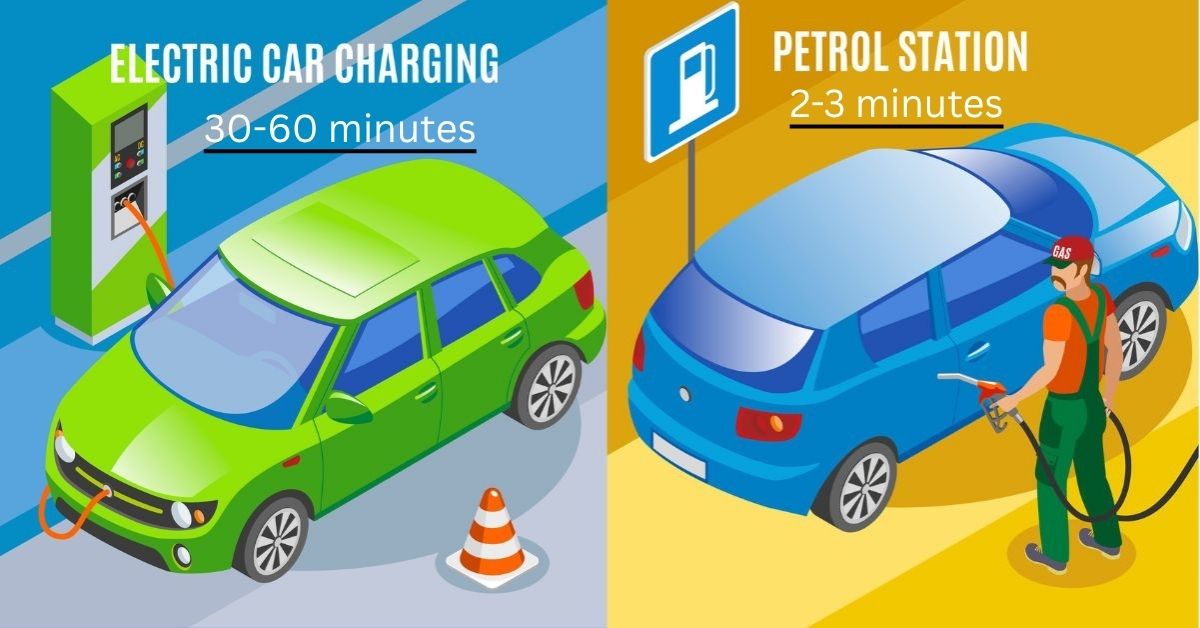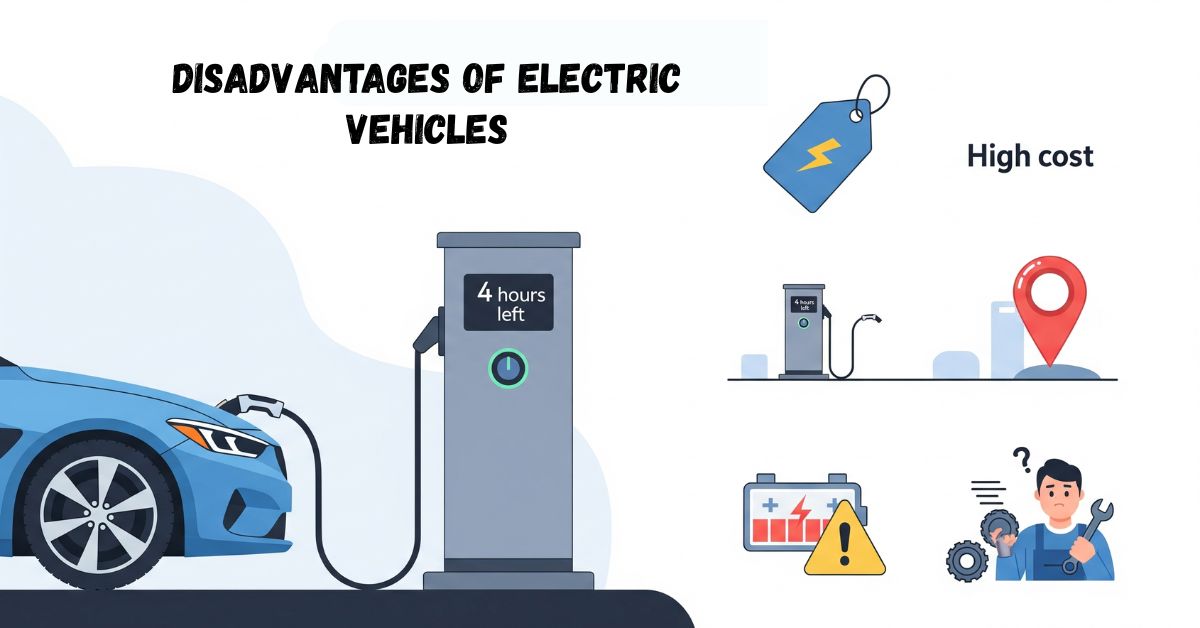Disadvantages of Electric Vehicles are becoming a bigger talking point as more drivers think about switching from gasoline cars. While EVs have plenty of benefits, they also come with some downsides. Knowing these challenges is important when deciding whether an EV is right for you. The truth is, electric vehicle technology is still developing, and certain limitations can affect the driving experience—especially if your lifestyle doesn’t perfectly match the way the technology works today.
High Upfront Cost
One of the biggest drawbacks of electric vehicles is their high purchase price. Even though battery costs are gradually dropping and many governments offer incentives, EVs still tend to be more expensive than traditional gasoline cars. This is mainly because the battery pack—the most costly part of an EV—significantly drives up the price.`

While lower fuel and maintenance costs can make up for this expense over time, the high upfront cost can still be a major barrier for many buyers. This makes EVs feel more like a luxury purchase rather than a practical option for the average driver, limiting their accessibility to a wider range of people.
Charging Time and Infrastructure Challenges

One of the main drawbacks of electric vehicles is the time it takes to charge them. Unlike gasoline cars that can refuel in just a few minutes, EVs take much longer. Even with a fast charger—which isn’t always easy to find—it can take 30 minutes or more to add a decent amount of range. Standard home chargers are even slower, often taking several hours for a full recharge. This can be inconvenient, especially during long trips that require careful planning for charging stops.
Another issue is that public charging networks are still developing in many regions. Charging stations are far less common than gas stations and can sometimes have problems with availability, reliability, or compatibility. These factors can create “range anxiety”—the worry of running out of battery before finding the next charging point.
Battery-Related Drawbacks

The battery is another area where electric vehicles face challenges. While battery technology is improving quickly, factors like cold weather can still reduce efficiency and shorten driving range, leading to more frequent charging. Over time, all batteries lose capacity, meaning they can’t hold as much charge as when they were new. Even though most manufacturers provide long warranties, replacing a battery can be very expensive, which may discourage some people from buying used EVs.
There are also environmental concerns linked to battery production. Mining materials such as lithium, cobalt, and nickel can harm local ecosystems and affect nearby communities. On top of that, the recycling systems for old EV batteries are still in the early stages, making the disposal process another challenge for the industry.
Challenges Without Home Charging

For people who don’t have a dedicated home charging setup—like those living in apartments or without a private driveway—owning an electric vehicle can be tricky. Depending on public charging stations is often less convenient and can cost more than charging at home. This turns what should be the simple task of refueling into the hassle of regularly hunting for an available charger.
Limited Repair and Maintenance Options
Although electric vehicles need less routine maintenance than gasoline cars, their complex electronics and high-voltage systems require specialized skills and equipment. Currently, there aren’t many certified technicians or independent workshops qualified to handle these repairs, which can lead to longer wait times and higher costs since owners often have to rely on manufacturer dealerships for advanced servicing.
Conclusion: Balancing the Pros and Cons
In conclusion, switching to electric vehicles is a great move toward a cleaner, more sustainable future, but it comes with challenges. High upfront prices, slow charging times, limited charging networks, battery lifespan concerns, and repair difficulties are all important factors to consider. Potential buyers should weigh these drawbacks against the benefits of quieter driving, lower running costs, and zero tailpipe emissions.

